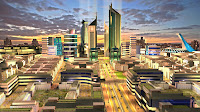Lapsset Corridor:US$500million down $23billion to go

The first three Berths: Contract Out. THE KENYA GOVERNMENT has shot the first volley in the proposed development of the Lamu Port South Sudan Ethiopia transport corridor, Lapsset. It has awarded the first contract in the US$23 billion project. The contract for the construction of the first three berths of the 32-berth Lamu Port will cost US500 million and is fully funded by the Kenya government. A consortium of Chinese construction companies led by China Communications Construction Company has won the contract. The work includes; the construction of; one general cargo berth, one bulk cargo and a container berth at Manda Bay, Lamu. Lamu port is designed to be a mega port, receiving any post-panamax vessel. Consequently, all berths will be dredged to a depth of 18.5 Metres. Other works include construction of; a 113 Ha hard standing yard, internal roads, Administration buildings, slipways and workshops for small crafts and associated infrastructure such as wate...


